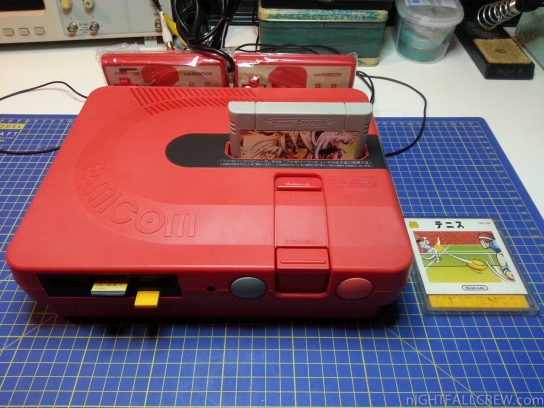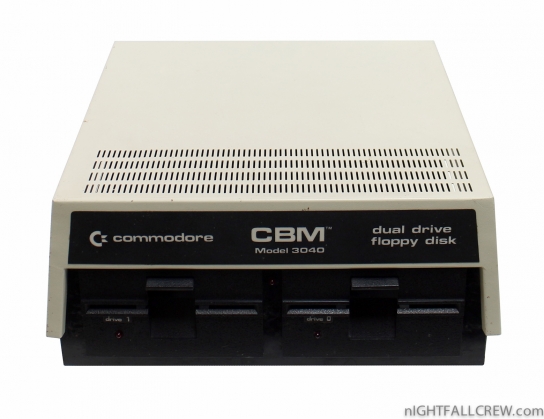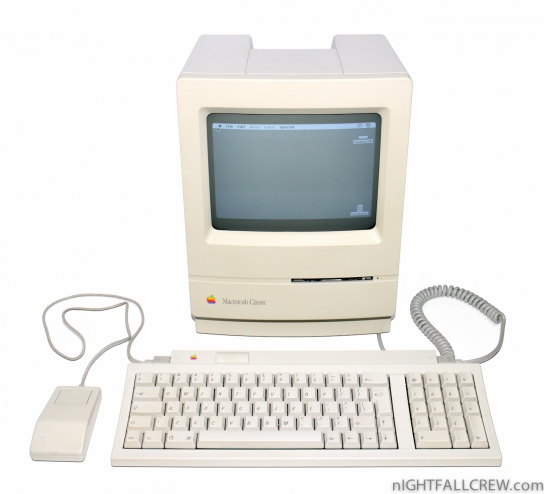Cleaning Commodore Amiga 2000 Power Supply
Photo of cleaning (before and after):
To clean the power supply i have used compressed air and a media bristle brush.
Photo of cleaning (before and after):
To clean the power supply i have used compressed air and a media bristle brush.
Click to view original size
I have repaired the Commodore Amiga 2000 with a Black Screen for a dear friend.

Defect:
Diagnosis:
Repair:

I have repaired the Sharp Twin Famicom AN-500R for a dear friend.
Sharp Twin Famicom AN-500R Repair.
Defects:
Fix:
The microphone is mixed into the output signal, if the contacts of the volume slider are dirty you hear a background noise which disturbs the in game audio.
Gallery:

The Commodore 3040 it’s a dual drive 5¼” floppy disk subsystem for Commodore International computers. It uses a wide case form, and uses the IEEE-488 interface common to Commodore PET/CBM computers.
These drive models use a similar single density, single side floppy data storage format to that used by the Commodore 1541 drive, but with a slightly different data marker indicating which model originally formatted the disk. The low-level disk format was similar enough to allow reading between models, but different enough that one series of drive models could not reliably write to disks formatted with one of the other model series.
Gallery before cleaning:
Cleaning cover lock & replaced tantalum capacitors:
Gallery:
Download: CBM 2040-3040-4040-8050 Disk Drive Manual (2073)
source: wikipedia

The Macintosh Classic is a personal computer manufactured by Apple Inc.. Introduced on October 15, 1990, it was the first Apple Macintosh to sell for less than US$1,000. Production of the Classic was prompted by the success of the Macintosh Plus and the Macintosh SE. The system specifications of the Classic were very similar to its predecessors, with the same 9-inch (23 cm) monochrome CRT display, 512×342 pixel resolution, and 4 megabyte (MB) memory limit of the older Macintosh computers.
Apple’s decision to not update the Classic with newer technology such as a 68010 CPU, higher RAM capacity or color display ensured compatibility with the Mac’s by-then healthy software base as well as enabled it to fit the lower price Apple intended for it. Nevertheless, the Classic featured several improvements over the aging Macintosh Plus, which it replaced as Apple’s low-end Mac computer. It was up to 25 percent faster than the Plus and included an Apple SuperDrive 3.5-inch (9 cm) floppy disk drive as standard.
The Classic was an adaptation of Jerry Manock’s and Terry Oyama’s 1984 Macintosh 128K industrial design, as had been the earlier Macintosh SE. Apple released two versions that ranged in price from $1,000 to $1,500. Reviewer reactions were mixed; most focused on the slow processor performance and lack of expansion slots. The consensus was that the Classic was only useful for word processing, spreadsheets and databases. The price and the availability of education software led to the Classic’s popularity in education. It was sold alongside the more powerful Macintosh Classic II in 1991 until its discontinuation the next year.
Gallery:
Macintosh Classic reCap:
source: wikipedia
Recent Comments